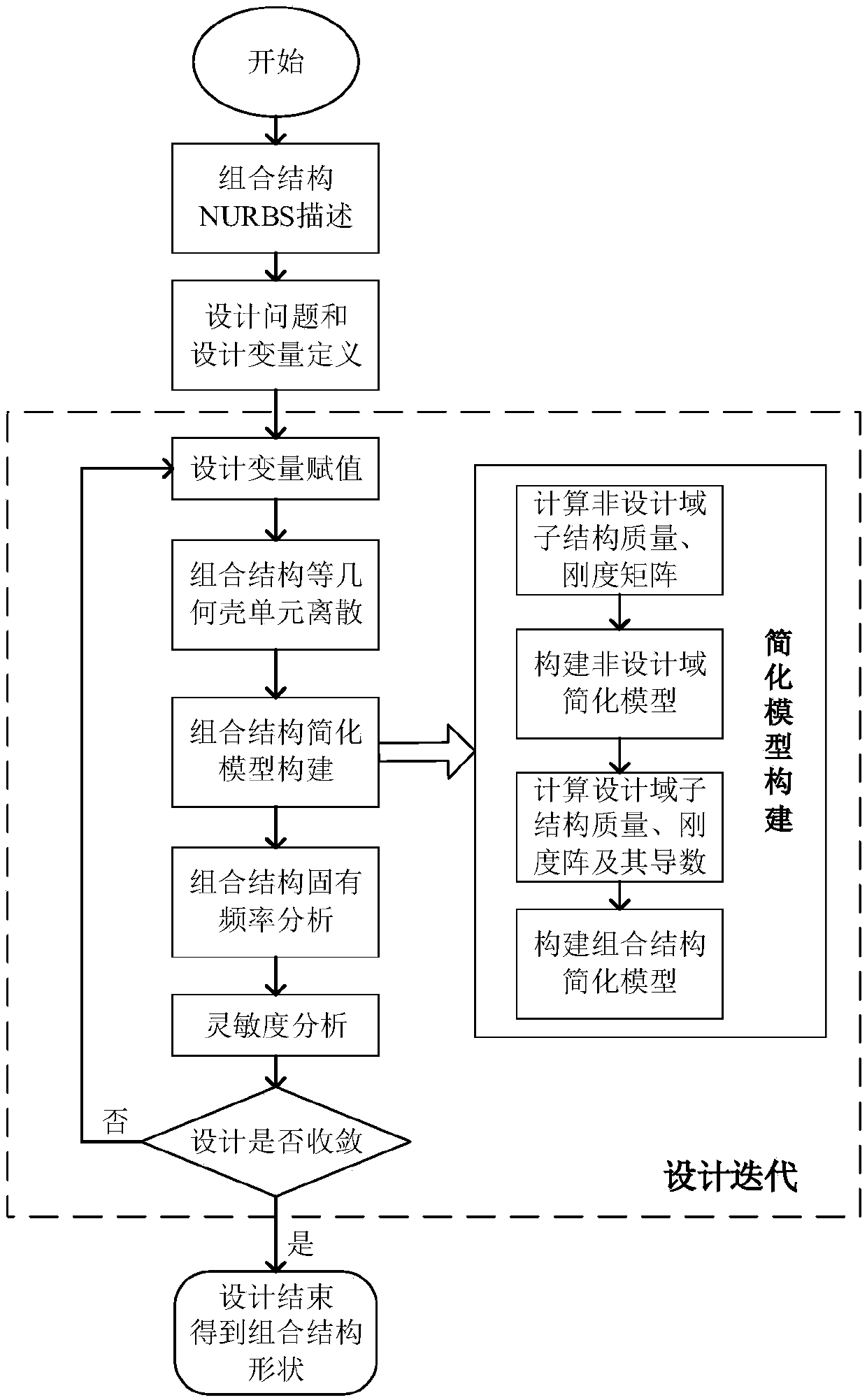Constant geometric method-based composite thin-walled structure inherent frequency design method
A thin-walled structure and natural frequency technology, applied in the field of thin-walled structure optimization design, can solve the problems of slowing down the optimization design speed, slowing down the optimization speed, and low precision
- Summary
- Abstract
- Description
- Claims
- Application Information
AI Technical Summary
Problems solved by technology
Method used
Image
Examples
Embodiment Construction
[0071] The present invention will be described in further detail below in conjunction with the accompanying drawings.
[0072] see figure 1 , the present invention is based on the natural frequency design method of the combined thin-walled structure of the equigeometric method, comprising the following steps:
[0073] Step (1) Use NURBS surface to describe the shape of each substructure of the initial combined thin-walled structure, and the surface model can also be exported from Rhino software or other CAD software. The geometric description of any subsurface is:
[0074]
[0075] Among them, R is the NURBS basis function, P i,j is the coordinate of the NURBS control point, which includes three sub-coordinates of x, y, and z. The surface has n×m control points in total. ξ and η are two parameters whose definition domain is [0,1].
[0076]
[0077] Among them, N is the B-spline basis function, and on its domain node vector, the node vectors in the two directions are: ...
PUM
 Login to View More
Login to View More Abstract
Description
Claims
Application Information
 Login to View More
Login to View More - R&D
- Intellectual Property
- Life Sciences
- Materials
- Tech Scout
- Unparalleled Data Quality
- Higher Quality Content
- 60% Fewer Hallucinations
Browse by: Latest US Patents, China's latest patents, Technical Efficacy Thesaurus, Application Domain, Technology Topic, Popular Technical Reports.
© 2025 PatSnap. All rights reserved.Legal|Privacy policy|Modern Slavery Act Transparency Statement|Sitemap|About US| Contact US: help@patsnap.com



